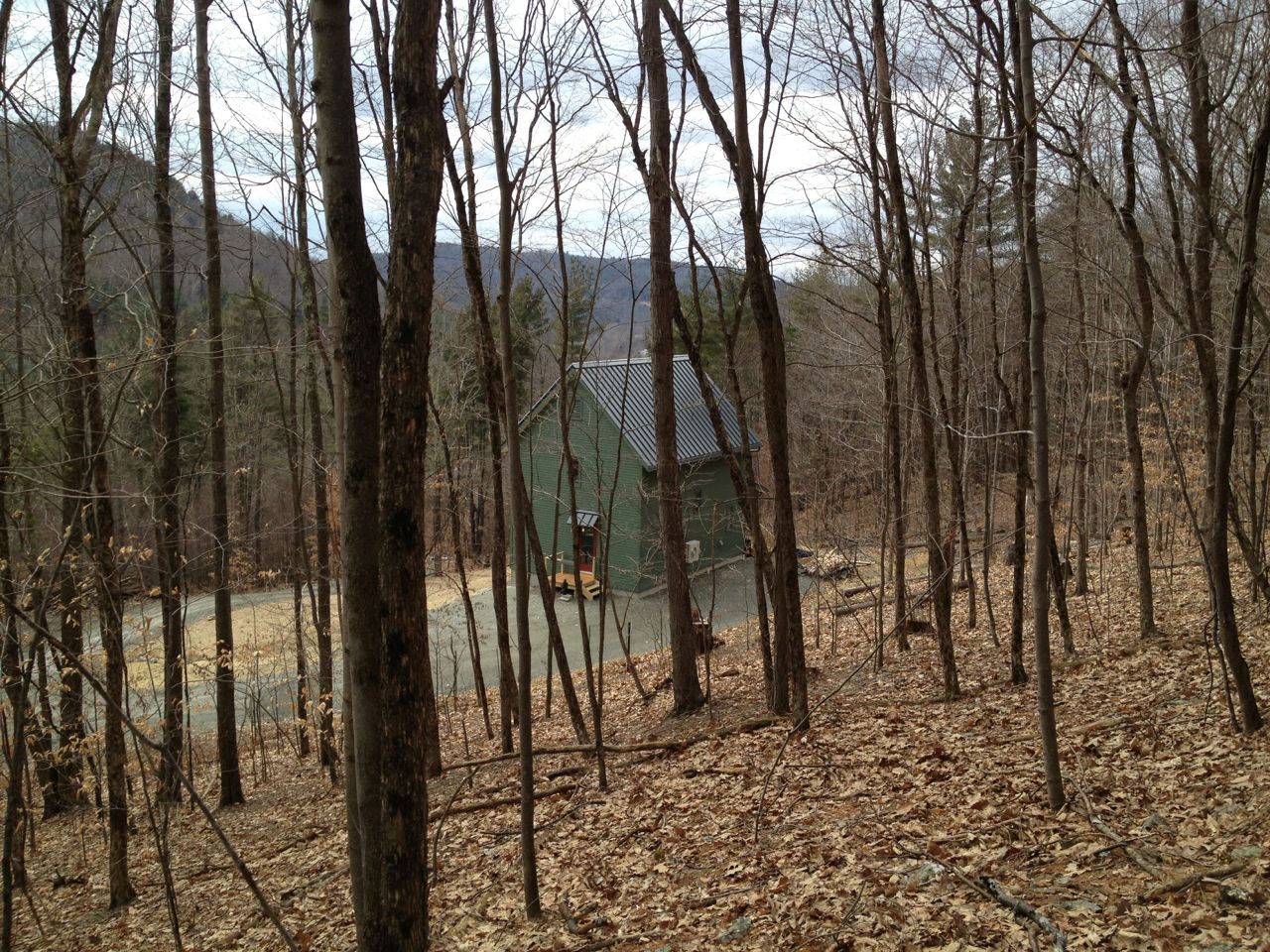Green home appraisal blues

When we started this project, we knew we were going against the prevailing wisdom, it’s one of the reasons we call this the uphill house. We always seem to be pushing things uphill when they naturally want to go the path of least resistance. First we decided to build a house on the side of hill. Not the easiest or cheapest option, but the view is spectacular and we have great access to the sun. Then we decided to build a super tight, super insulated house in an area that has no skills building this way, but we did it anyway and were quite successful. Finally, we decided to build a smaller house so we could spend our money on quality materials, systems and appliances.
All these things make a beautiful, long lasting, extremely comfortable and efficient home, but unfortunately don’t appraise well. We recently had our home and property appraised as we seek to roll over our construction loan into a mortgage.
Make sure there’s something soft under your jaw… the appraisal came in at roughly 65% of the total value we’ve put into the land, house, driveway, septic and well… and that doesn’t even include our own sweat equity.
The main issue is the lack of comparable properties. The closest truly comparable net zero homes in New York are closer to Albany, and there’s a few across the border in Vermont and Massachusetts. Since there are no comparable properties in our immediate area, we must be compared to houses of a similar size and number of bed and bathrooms. Those houses are far cheaper since they only include the code minimum for insulation and none have a solar PV array. The difference in value is quite large. (There is a good article by Richard Defendorf on the GreenBuildingAdvisor site that describes these issues, When Green Poses an Appraisal Problem.)
As we see it, home appraisals are good at valuing similar things, apples to apples, but fail when comparing Apples to PCs. We are quite happy to pay a premium for Apple products because we understand and appreciate the value. If you don’t understand the value, then an iPad clearly looks more expensive than it’s worth when compared to other tablets. If you’re only means of comparison is square footage and number of beds and baths, then our house looks more expensive than it’s worth in comparison to other homes.
The end result is that we do not qualify for a standard loan from Freddie Mac. Thankfully we are working with a great local bank that sees the value and is willing to take the loan onto their balance sheet. However, to protect themselves from the extra risk of not being able to resell the loan to Freddie Mac, they are offering the loan at a higher interest rate.
And this is what leaves us feeling blue. Building green and choosing quality over quantity is considered more risky than a standard home built using standard practices.

Categories
- Air sealing 13
- Appliances & Fixtures 4
- Art 3
- Award 4
- Bathroom 8
- Batteries 1
- Decor 5
- Design 10
- Electrical 5
- Energy Calculations 13
- Energy Monitors 4
- Farm 1
- Finance 1
- Flooring 3
- Foundation 9
- Framing 8
- Heating 9
- House 7
- Insulation 8
- Kitchen 6
- Landscaping 3
- Lessons Learned 1
- Performance 60
- Plumbing 10
- Porch 5
- Radon 1
- Rainwater catchment 3
- Research / study 1
- Roof 7
- Septic / Waste water 2
- Sheetrock 6
- Siding 9
- Site Work 22
- Smart home 1
- Solar 64
- Solar Obsessed 10
- Stairs 2
- Surveying 3
- Ventilation 8
- Weather 1
- Windows & Doors 14
- plug-in 3
Archive
- Jan 2021 1
- Dec 2020 2
- May 2020 1
- Jan 2020 1
- May 2019 1
- Jan 2019 3
- Sep 2018 2
- Aug 2018 2
- Jan 2018 1
- Oct 2017 2
- Apr 2017 1
- Jan 2017 1
- Oct 2016 2
- Aug 2016 1
- Apr 2016 2
- Jan 2016 2
- Nov 2015 2
- Oct 2015 1
- Jul 2015 1
- May 2015 1
- Apr 2015 1
- Jan 2015 1
- Dec 2014 1
- Nov 2014 2
- Oct 2014 4
- Sep 2014 2
- Aug 2014 1
- Jul 2014 1
- Mar 2014 3
- Feb 2014 2
- Jan 2014 2
- Nov 2013 1
- Oct 2013 1
- Sep 2013 1
- Jul 2013 3
- Apr 2013 3
- Jan 2013 3
- Dec 2012 2
- Nov 2012 3
- Oct 2012 1
- Sep 2012 3
- Aug 2012 3
- Jul 2012 2
- Jun 2012 1
- May 2012 3
- Apr 2012 2
- Mar 2012 4
- Feb 2012 4
- Jan 2012 5
- Dec 2011 4
- Nov 2011 9
- Oct 2011 10
- Sep 2011 9
- Aug 2011 6
- Jul 2011 6
- Jun 2011 12
- May 2011 8
- Apr 2011 4
- Mar 2011 5
- Jan 2011 6
- Dec 2010 9
- Nov 2010 3
- Oct 2010 4
- Sep 2010 6
- Aug 2010 8
- Jul 2010 6
- Jun 2010 3
- May 2010 3
- Apr 2010 1
- Mar 2010 3
- Feb 2010 3
- Dec 2009 1
- Jun 2009 1
- May 2009 1
- Feb 2009 1
- Dec 2008 1
- Nov 2008 1
- Jun 2008 1
